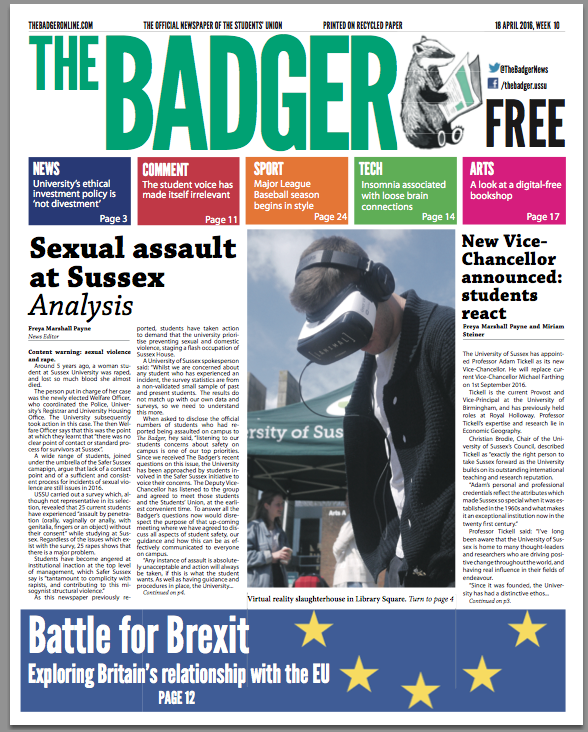Following the occupation at Sussex House, in which a few senior members of staff effectively held their own occupation within that building by refusing to leave without police escort, a number of students of high-profile were suspended for their involvement.
But contrary to some claims that suspensions contravene the due process of the university, the Ordinances and Regulations stipulate in one odious tract that the vice-chancellor may suspend any student without assigning any reason.
The management has previously acted to neutralize its critics by denying requests to vote on the proposals for restructuring and redundancies presented to Senate in Autumn Term’s meeting of Senate, and furthermore a High Court injunction has been obtained to prevent anyone undertaking occupational protest action at the university, criminalising an act long believed to be a legitimate form of protest. Thus the management reveal a distinct contempt for democracy.
As students began the occupation, the police arrived and prevented the free entry and egress of students at Sussex House, resulting in some clashes. University management’s reliance on the police, with their Stasi-like tactics of intimidation, stalking, and invasion of privacy as well as the usual bully-boy behaviour, suggests they are prepared to push through the Vice-Chancellor’s Executive Committee’s (VCEG) proposals at any cost to our university community’s cohesion, trust and integrity.
Of course, the management requires none of these things from its workers or students, only their obedience. Ultimately, it will be the wider community of universities and prospective students who will decide which party has done the most injury to the good name and good order of Sussex.
With hindsight it is easy to see why this occupation was treated so differently, whereas previous campus occupations have been treated so cordially. Besides the unsubstantiated claim that staff were being held hostage that quickly escalated, Sussex House is of course the seat of the management. The occupation at Sussex House was an unavoidable presence in contrast to the occupation of Arts A2 last January that did not interfere with lectures and so could be treated without urgency, and was finally satisfied by agreements with the vice-chancellor. But no such whitewash would suffice this time, and concessions on one side would be necessary to end the standoff. With riot police gearing-up outside, and reportedly some 50 to 80 students inside, few options remained.
Occupations have been used effectively before, particularly when walkouts and strikes have been too easily ignored, and when forcing workers to leave the workplace is exactly what management plans. It makes clear that the workplace belongs to the workers and not to those holding decision-making powers over them.
Control of the space is the essence of the tactic, to allow continuous participation of all supporting the cause, free from the fear of repercussions, and the possibility of creative usages of the occupied space such as ‘teach-ins’. But this first depends on the presence of a critical mass, which the attempt on Wednesday did not muster.
Now the movement against the VCEG’s proposals must box clever if it wishes to avoid disciplinary and legal measures. It must make use of publicity on a local and national level, and put time and slow-burning energy into gaining mass confidence and support for a more democratic organisation of the university.
Consensual decision-making and democracy in the workplace is neither a radical plan nor a utopian dream: it should be the aim of all those who count equality as a right. Persistent conscientious acts towards this end demonstrate not political extremity, but rather the desperation of those in power to maintain economic control of others.
On Wednesday 3 March, the Universities and Colleges Union (UCU) returned a vote overwhelmingly in favour of strike action at 74.6%, and had a record-breaking turnout of over 80%. Such an eventuality should provide ample opportunity for the students and staff of the movement to unify and discuss their desires and plans for the future of the university.



